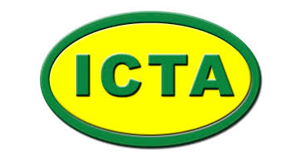Good Science and Good Management Team Up to Fight Malnutrition
Since 2016, an alliance led by ICTA and buttressed by ATESCATEL's innovative management has promoted the production and sale of seeds of biofortified crops in the Guatemalan dry corridor. Its impact reaches more than 5,000,000 people.
Context of the story
Guatemala has the highest level of chronic malnutrition in Latin America.
32.4% of Guatemalan children under 5 years of age are affected by hidden hunger due to diets deficient in micronutrients such as iron and zinc.
Although Guatemalans can obtain these essential nutrients from white corn and black beans, since 2015 the area that produces these basic grains in Guatemala has been affected by recurrent droughts caused by climate change.
Currently, about 37% of the population of this region, called the dry corridor for the frequency of its cyclical droughts, suffers from severe or moderate food insecurity.
Fortify Grains, Fortify Management, Fortify Nutrition
The implemented initiative
To enrich family diets, the Institute for Agricultural Science and Technology (ICTA) developed, tested and released biofortified varieties of beans, corn and hybrid corn.
In turn, with training and support from the BioFORT Platform and HarvestPlus, starting in 2016, ATESCATEL developed a model of vertical integration of conventional and biofortified seed chains, from production to sale.
The alliance faced technological and cultural challenges together to develop, produce, and disseminate biofortified seeds.
Seed Biofortification in a Collaborative Framework
The technological solution
The ICTA implemented the biofortification of corn and beans with the support of HarvestPlus, which helped obtain genetic material from nutrient-dense varieties.
The institute evaluated and selected materials for their adaptation to the environment and agronomic performance.
Later, some varieties were sent to test plots in the fields of farmers who managed the new crops using traditional technology.
The researchers also conducted sensory acceptability studies among farmers' families.
After a process that took several years, the new varieties were registered and released to the market.
The team held field days with producers and consumers and distributed materials to promote the crops.
ATESCATEL participated in the initiative from the first evaluations of the new biofortified varieties in associated fields. After receiving training, the cooperative revolutionized its management model and began to produce the new seeds, diversifying its portfolio.
"With these varieties, our children eat the usual serving of beans and a tortilla, but the nutritional content is higher."
Participating countries
Type of project
Results
The direct beneficiaries are estimated to be more than 14,000.
Indirect beneficiaries include 340,750 low-income women at risk of anemia.
According to HarvestPlus, a tortilla (bread substitute) made with ICTA HB-18ACP + Zinc corn has twice as much zinc as one made with conventional grain.
ICTA B-15ACP + Zinc corn provides 90% of the proteins contained in milk, while conventional corn provides only 40%.
The proportion of sales of Bioforti?ed seeds is increasing in ATESCATEL’s portfolio, an expansion that has translated into greater adoption by small-scale farmers in the region.
The cooperative has enjoyed significant financial improvement ever since it diversified its portfolio.
Relevant data
Nutrients under scrutiny
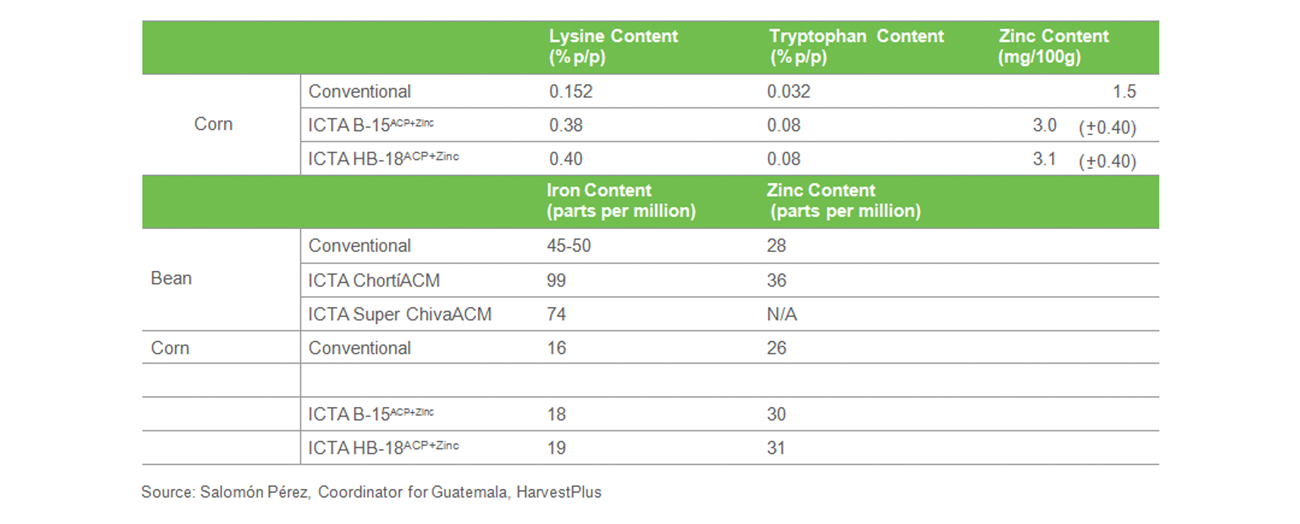
Numbers of buyers of biofortified bean and corn seeds produced by ATESCATEL
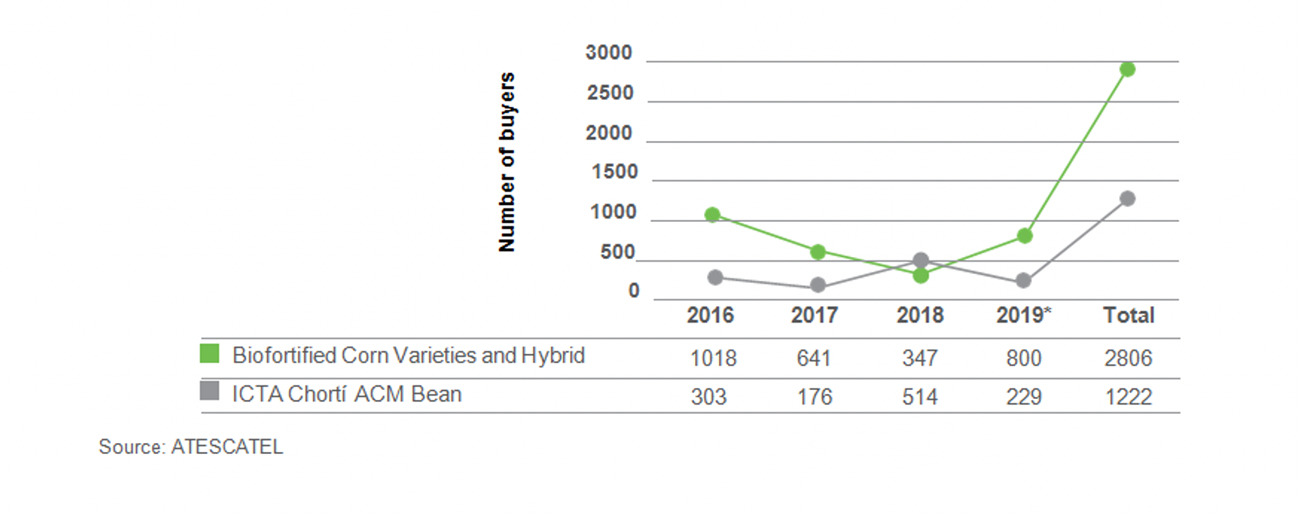
Participating Organizations
Project Information



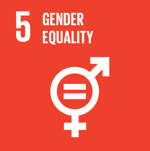
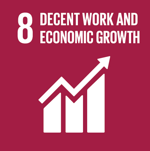
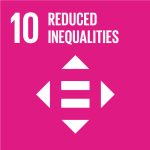



 Guatemala
Guatemala